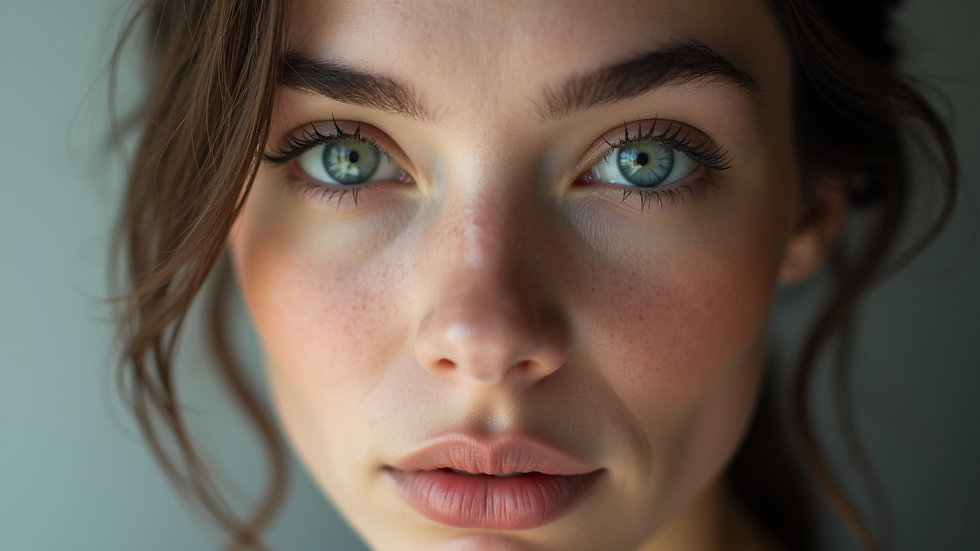The Science Behind Attraction How Evolutionary Psychology Shapes Our Desires
- Aleksandar Tosevski

- Sep 15
- 3 min read
Attraction can be as puzzling as trying to solve a Rubik's Cube blindfolded. Why do we find ourselves magnetically pulled towards some people, like moths to a particularly charming flame? The secret sauce might just be evolutionary psychology, whispering that our taste in people is stirred by biological ingredients simmering since the dawn of time. Unraveling these influences is like getting a backstage pass to the concert of our own desires and attractions!
Symmetry: The Beauty of Balance
One fascinating aspect of attraction is facial symmetry. Studies reveal that approximately 75% of people find symmetrical faces more attractive. But what underlies this preference?
From an evolutionary perspective, symmetry is associated with genetic health. A symmetrical face suggests that an individual has developed properly and is likely free of genetic defects. This instinctive attraction to symmetrical features is not merely cultural; it is a biological inclination.
For instance, a study conducted by the University of California found that babies as young as three months prefer symmetrical faces, indicating that this preference is innate. By seeking out symmetrical partners, we may be unconsciously looking for individuals who can pass on strong genes to our offspring.
Physical Attractiveness: The Indicators of Quality
Physical attractiveness encompasses various characteristics, including body shape, height, and facial features. Research shows that traits like a strong jawline and a well-proportioned body are often deemed attractive.
From an evolutionary viewpoint, such traits signal genetic fitness. A strong jawline is linked to higher testosterone levels, which often correlate with better health. Similarly, studies indicate that taller individuals, particularly men, are perceived as more dominant, potentially increasing their appeal as partners.
Interestingly, a report from the Journal of Evolutionary Biology found that height differences in couples often favor taller men, suggesting that women subconsciously associate height with security and stability. When we feel attracted to certain physical traits, we assess a partner’s ability to contribute to the survival and success of future generations.
Reproductive Ability: The Promise of Offspring
Reproductive capacity plays a crucial role in attraction. Individuals who display traits associated with fertility are often viewed as more attractive.
For women, indicators of fertility include clear skin and a youthful look, which signal vitality and reproductive health. For men, signs of strength and physical fitness signify virility.
These attractions are biologically driven. When drawn to someone exhibiting these qualities, we are evaluating their potential to produce healthy offspring.
Social Status: The Role of Resources
While biology is critical, social status cannot be ignored. Partners with high social standing tend to possess resources that provide significant advantages for raising children.
Evolutionary theory suggests that choosing a partner with more resources, such as wealth or social influence, ensures better protection and opportunities for offspring. This is evident in modern society where individuals often gravitate toward those with a stable career or a prominent social network.
Research by sociologists shows that about 60% of respondents consider social status when selecting a partner, demonstrating its significant role in shaping romantic preferences. In today's dating world, attributes like professional success can enhance a person's attractivity as they signal capability and stability.

The Interplay of Biological and Social Factors
The relationship between biological and social factors in attraction is intricate. Our instincts may guide us toward specific traits, but social contexts heavily influence our preferences.
Cultural norms can shape perceptions of what is attractive. For example, in some cultures, fuller body types are celebrated for indicating wealth and prosperity, while in others, slimness is preferred. This cultural flexibility suggests that while our biological roots drive certain preferences, these grow and change with societal influence.
Ultimately, this interplay between personal experiences and evolutionary instincts creates a multifaceted understanding of attraction. The uniqueness of individual experiences shapes preferences in significant ways, highlighting the complexity of our desires.
Understanding Attraction Through an Evolutionary Lens
Studying attraction through the lens of evolutionary psychology offers valuable insights into why we desire specific traits. By examining symmetry, physical attractiveness, reproductive capability, and social status, we can better understand the motivations underlying our choices.
Attraction isn't just about having a face that could launch a thousand ships; it's the cosmic cocktail of our evolutionary escapades mixed with today's social circus. By getting this, we can whip up relationships that are healthier and more insightful, like a smoothie of desires with a dash of historical flavor.
Basically, attraction is about finding people who have the survival skills of a caveman and the charm of a modern-day Casanova. By decoding these prehistoric puzzles, we give ourselves the superpower to dive into relationships with our eyes wide open, making our connections deeper and our experiences richer than a chocolate fondue.



Comments